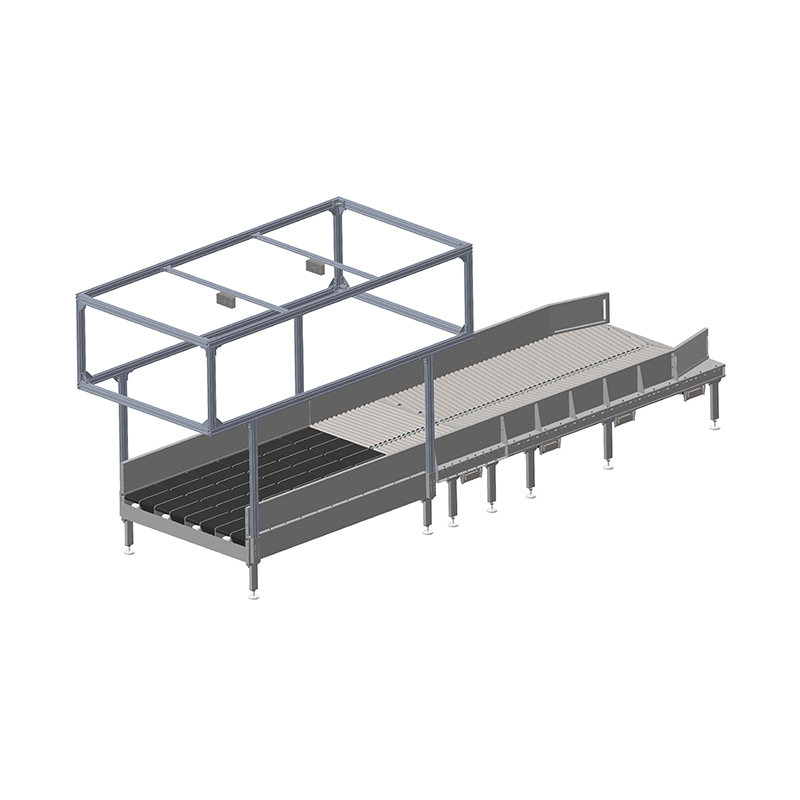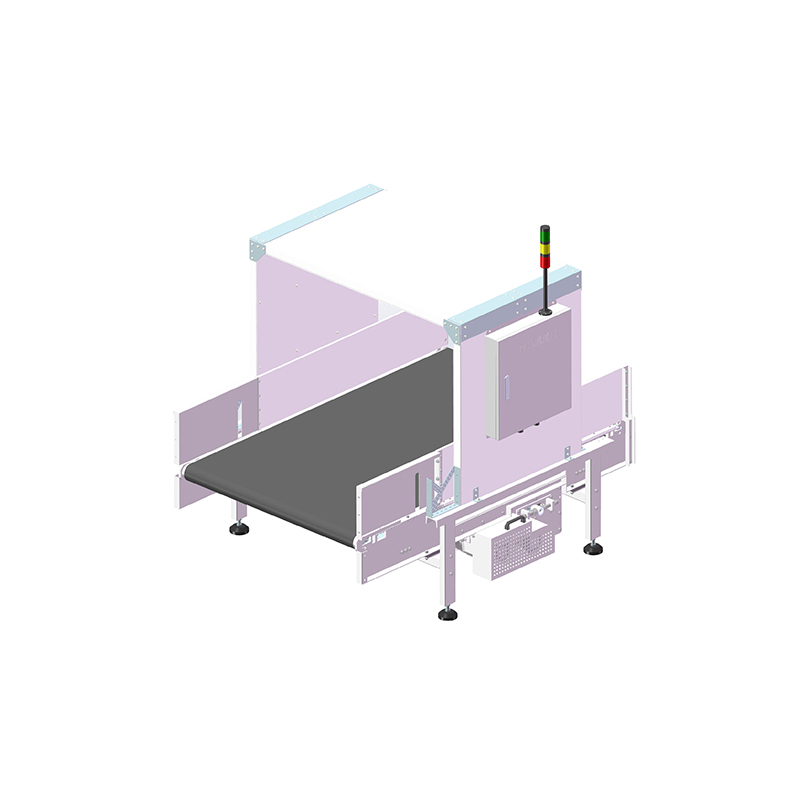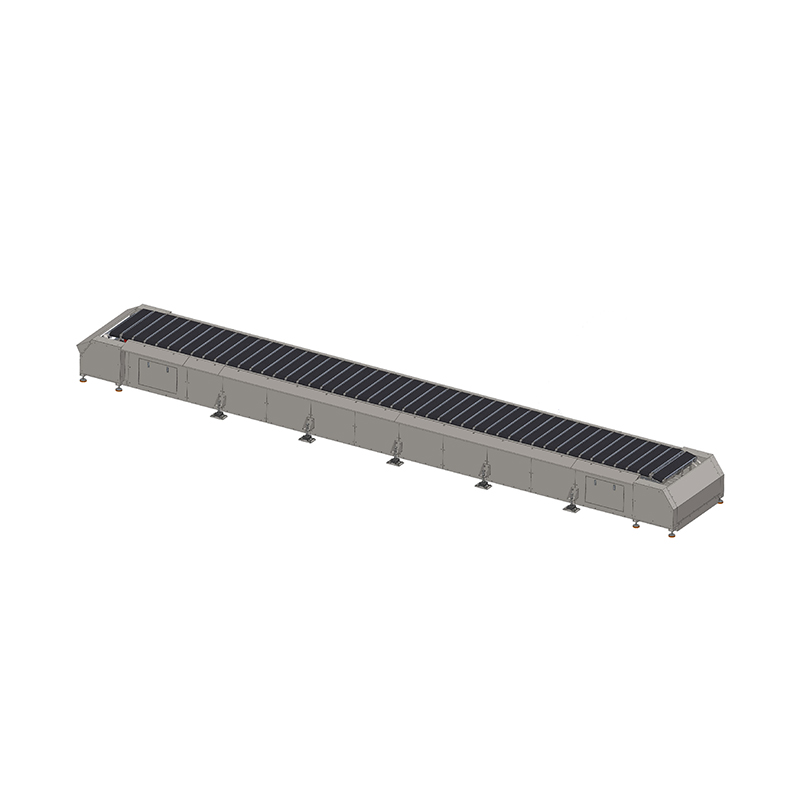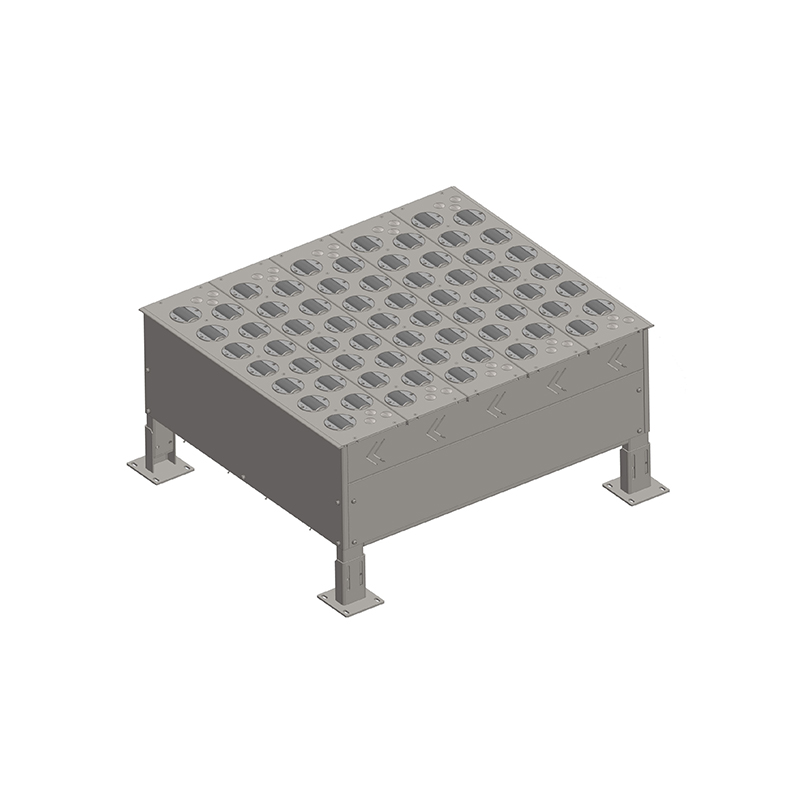"Invisible cornerstone" in logistics automation: the value and selection risk of belt conveyors
Release Time : 2025-05-19
In customer planning and selection in the logistics automation industry, belt conveyors are often "ignored" by customers due to their relatively simple structure. However, they are the cornerstone of logistics automation, just like the capillaries in the human body, which are spread throughout every corner of the entire automation plan. If the selection fails, the losses will be comprehensive. Do you agree?
1. Technical value of belt conveyor: underestimated "system artery"
Full-scenario adaptability
With its modular design, belt conveyor can flexibly respond to the diverse needs of logistics scenarios:
Horizontal/inclined conveying: by adjusting the roller angle to achieve 0°-30° material lifting, adapt to the connection between different floors or equipment;
Multi-material compatibility: by adjusting the belt material (such as PVC, PU, rubber) and texture (herringbone, grass, smooth), it can convey various materials from cartons, plastic pallets to metal parts;
Environmental adaptability: in special scenarios such as cold chain (-25℃), explosion-proof (ATEX certification), clean workshop (ISO Class 5), etc., customized design can ensure stable operation of the system.
The balance point between efficiency and cost
Compared with AGV, sorting robots and other equipment, the unit length cost of belt conveyor is only 1/5-1/10 of the former, but its conveying efficiency can reach 30-150 meters/minute, and the energy consumption is only 0.5-2kW/hour. For example, in an e-commerce warehouse, a 200-meter-long belt conveyor line can replace 20 manual porters, saving more than 2 million yuan in labor costs annually.
The "invisible link" of system compatibility
The belt conveyor is a "bridge" connecting core equipment such as sorters, palletizers, and packaging machines. Its interface is highly standardized (such as using general drive systems such as SEW and Nord), and can be quickly integrated into WMS (warehouse management system) and WCS (equipment control system) to achieve full-process automated scheduling.
2. The cost of selection errors: from local hidden dangers to global crises
The chain reaction of efficiency bottlenecks
Insufficient bandwidth: If the conveyor bandwidth is less than 1.2 times the maximum size of the material, it will cause jamming and package substitution, reducing the sorting efficiency by more than 30%;
Speed mismatch: If the conveying speed is not coordinated with downstream equipment (such as sorters), it will cause congestion and force the system to operate at a reduced frequency.
Long-term erosion of hidden costs
Energy waste: The use of inefficient motors (such as those below IE2) or failure to optimize the drive solution will lead to an increase in energy consumption of 20%-40%;
Maintenance cost surge: If self-cleaning belts or anti-deviation devices are not used, the belt wear rate will increase by 50%, and the annual maintenance cost will increase by more than 100,000 yuan.
Irreversible consequences of safety risks
Lack of protection: Failure to configure safety devices such as emergency stop buttons and anti-entry guardrails may lead to industrial accidents;
Material hazards: The use of inferior belts (such as recycled materials) may cause breakage, causing material spillage or even equipment damage.
3. the five core principles of scientific selection
Demand-oriented customized design
Flow measurement: Determine the bandwidth and speed based on the average daily order volume and peak processing capacity (such as the recommended bandwidth of e-commerce warehouses ≥800mm, speed ≥60m/min);
Dynamic simulation: Verify the layout of the conveyor line through simulation software such as FlexSim to avoid design defects such as right-angle turns and emergency stops.
Precise matching of technical parameters
Drive system: Prioritize the use of IE3 or higher high-efficiency motors, and use frequency converters to achieve 0-100% stepless speed regulation;
Belt material: Select according to material characteristics (e.g. FDA-certified PU belts are required for the food industry, and high-strength rubber belts are required for heavy-duty scenarios).
Necessity of redundant design
Backup power unit: Key conveyor lines are equipped with dual motors or UPS power supplies to ensure that in-transit material transportation is completed within 5 minutes after power failure;
Modular expansion: Adopt detachable rollers and quick-connect belt design to facilitate later expansion or maintenance.
Potential for intelligent upgrade
Sensor integration: Deploy photoelectric sensors and weighing modules to achieve material counting and weight detection;
IoT connection: Access the industrial Internet platform through the OPC UA protocol to monitor belt tension, motor temperature and other parameters in real time.
Full life cycle cost evaluation
TCO model: Comprehensive equipment procurement, energy consumption, maintenance, downtime loss and other costs, select the most cost-effective solution;
Supplier capabilities: Prioritize manufacturers with non-standard design capabilities and quick response to after-sales services (such as Dematic, Vanderlande, etc.).
4. Case enlightenment: the cost and redemption of selection errors
A multinational retail company once neglected the selection of belt conveyors, resulting in the sorting efficiency of the new warehouse being only 60% of the design value after it went online. After diagnosis, it was found that:
Insufficient bandwidth: the original design bandwidth was 600mm, but the actual width of 800mm wide special-shaped packaging boxes needed to be transported;
Speed conflict: the conveyor line speed was 40m/min, but the downstream sorting machine speed was only 25m/min, causing congestion;
Energy consumption out of control: the inverter was not used, and the motor still ran at full power when running without load.
Correction plan:
Replace with a 1000mm wide belt and add guide strips to prevent deviation;
Add inverter and PLC linkage to achieve dynamic speed matching;
Upgrade to IE4 motor, saving 150,000 kWh of electricity per year.
Results: Sorting efficiency increased to 95% of the design value, and annual operation and maintenance costs reduced by 40%.
Don't let "capillaries" become the shortcoming of the system
In the grand narrative of logistics automation, belt conveyors are like capillaries in the human body. Although inconspicuous, they are related to life and death. Enterprises need to abandon the misunderstanding that "simple equipment does not need to be taken seriously" and build a scientific selection system from three dimensions: demand analysis, technology matching, and risk prevention and control. Only in this way can this "invisible bond" truly become the lifeline of the logistics system, rather than a hidden time bomb.
In the planning stage of logistics automation projects, customers often focus on "high-light equipment" such as AGV (automatic guided vehicles), sorting robots, and stereoscopic warehouses, while belt conveyors are underestimated due to their simple structure and mature technology. However, these seemingly "ordinary" conveyor lines are actually the capillaries of the logistics system, running through the entire process of warehousing, sorting, packaging, and outbound delivery. Once the selection is wrong, the chain reaction will lead to decreased efficiency, a surge in energy consumption, rising maintenance costs, and even systemic paralysis. This article will reveal the strategic position of belt conveyors in logistics automation from three dimensions: technical value, selection errors, and risk prevention and control.
1. Technical value of belt conveyor: underestimated "system artery"
Full-scenario adaptability
With its modular design, belt conveyor can flexibly respond to the diverse needs of logistics scenarios:
Horizontal/inclined conveying: by adjusting the roller angle to achieve 0°-30° material lifting, adapt to the connection between different floors or equipment;
Multi-material compatibility: by adjusting the belt material (such as PVC, PU, rubber) and texture (herringbone, grass, smooth), it can convey various materials from cartons, plastic pallets to metal parts;
Environmental adaptability: in special scenarios such as cold chain (-25℃), explosion-proof (ATEX certification), clean workshop (ISO Class 5), etc., customized design can ensure stable operation of the system.
The balance point between efficiency and cost
Compared with AGV, sorting robots and other equipment, the unit length cost of belt conveyor is only 1/5-1/10 of the former, but its conveying efficiency can reach 30-150 meters/minute, and the energy consumption is only 0.5-2kW/hour. For example, in an e-commerce warehouse, a 200-meter-long belt conveyor line can replace 20 manual porters, saving more than 2 million yuan in labor costs annually.
The "invisible link" of system compatibility
The belt conveyor is a "bridge" connecting core equipment such as sorters, palletizers, and packaging machines. Its interface is highly standardized (such as using general drive systems such as SEW and Nord), and can be quickly integrated into WMS (warehouse management system) and WCS (equipment control system) to achieve full-process automated scheduling.
2. The cost of selection errors: from local hidden dangers to global crises
The chain reaction of efficiency bottlenecks
Insufficient bandwidth: If the conveyor bandwidth is less than 1.2 times the maximum size of the material, it will cause jamming and package substitution, reducing the sorting efficiency by more than 30%;
Speed mismatch: If the conveying speed is not coordinated with downstream equipment (such as sorters), it will cause congestion and force the system to operate at a reduced frequency.
Long-term erosion of hidden costs
Energy waste: The use of inefficient motors (such as those below IE2) or failure to optimize the drive solution will lead to an increase in energy consumption of 20%-40%;
Maintenance cost surge: If self-cleaning belts or anti-deviation devices are not used, the belt wear rate will increase by 50%, and the annual maintenance cost will increase by more than 100,000 yuan.
Irreversible consequences of safety risks
Lack of protection: Failure to configure safety devices such as emergency stop buttons and anti-entry guardrails may lead to industrial accidents;
Material hazards: The use of inferior belts (such as recycled materials) may cause breakage, causing material spillage or even equipment damage.
3. the five core principles of scientific selection
Demand-oriented customized design
Flow measurement: Determine the bandwidth and speed based on the average daily order volume and peak processing capacity (such as the recommended bandwidth of e-commerce warehouses ≥800mm, speed ≥60m/min);
Dynamic simulation: Verify the layout of the conveyor line through simulation software such as FlexSim to avoid design defects such as right-angle turns and emergency stops.
Precise matching of technical parameters
Drive system: Prioritize the use of IE3 or higher high-efficiency motors, and use frequency converters to achieve 0-100% stepless speed regulation;
Belt material: Select according to material characteristics (e.g. FDA-certified PU belts are required for the food industry, and high-strength rubber belts are required for heavy-duty scenarios).
Necessity of redundant design
Backup power unit: Key conveyor lines are equipped with dual motors or UPS power supplies to ensure that in-transit material transportation is completed within 5 minutes after power failure;
Modular expansion: Adopt detachable rollers and quick-connect belt design to facilitate later expansion or maintenance.
Potential for intelligent upgrade
Sensor integration: Deploy photoelectric sensors and weighing modules to achieve material counting and weight detection;
IoT connection: Access the industrial Internet platform through the OPC UA protocol to monitor belt tension, motor temperature and other parameters in real time.
Full life cycle cost evaluation
TCO model: Comprehensive equipment procurement, energy consumption, maintenance, downtime loss and other costs, select the most cost-effective solution;
Supplier capabilities: Prioritize manufacturers with non-standard design capabilities and quick response to after-sales services (such as Dematic, Vanderlande, etc.).
4. Case enlightenment: the cost and redemption of selection errors
A multinational retail company once neglected the selection of belt conveyors, resulting in the sorting efficiency of the new warehouse being only 60% of the design value after it went online. After diagnosis, it was found that:
Insufficient bandwidth: the original design bandwidth was 600mm, but the actual width of 800mm wide special-shaped packaging boxes needed to be transported;
Speed conflict: the conveyor line speed was 40m/min, but the downstream sorting machine speed was only 25m/min, causing congestion;
Energy consumption out of control: the inverter was not used, and the motor still ran at full power when running without load.
Correction plan:
Replace with a 1000mm wide belt and add guide strips to prevent deviation;
Add inverter and PLC linkage to achieve dynamic speed matching;
Upgrade to IE4 motor, saving 150,000 kWh of electricity per year.
Results: Sorting efficiency increased to 95% of the design value, and annual operation and maintenance costs reduced by 40%.
Don't let "capillaries" become the shortcoming of the system
In the grand narrative of logistics automation, belt conveyors are like capillaries in the human body. Although inconspicuous, they are related to life and death. Enterprises need to abandon the misunderstanding that "simple equipment does not need to be taken seriously" and build a scientific selection system from three dimensions: demand analysis, technology matching, and risk prevention and control. Only in this way can this "invisible bond" truly become the lifeline of the logistics system, rather than a hidden time bomb.








